by Keith ‘Malik’ Washington, chief spokesperson for the End Prison Slavery in Texas Movement

“The spirit of the Lord is upon me. He has anointed me to preach the gospel to the poor, heal the brokenhearted, restore sight to the blind and set the captives free.” – The Book of Luke 4:18, The Holy Bible
Peace and blessings, sisters and brothers!
Well, it does not get any realer than this. On the front page of USA Today for Dec. 27, 2018, we saw a shocking headline: “Grave discovery unearths legacy of Black convict labor.”
The unmarked graves of 95 “prison slaves” were found on a construction site in Sugar Land, Texas. These Black men, ages 14 to 70 years old, were our ancestors and the first victims of what we have come to know as prison slavery in Amerika!
These contract convict laborers were subjected to this form of slavery because the 13th Amendment of the U.S. Constitution still allows slavery. Only the name has been changed. Slavery is still alive!
As the New York Times wrote in an Aug. 13, 2018, editorial: “The dead are almost certainly victims of the second system of slavery that arose when Southerners set out to circumvent the 13th Amendment of 1865, which outlawed involuntary servitude except as punishment for criminal conviction.
“Those states imposed what the Pulitzer Prize-winning writer Douglas Blackmon rightly describes as ‘slavery by another name‘ – sweeping Negroes into custody for petty offenses like vagrancy, then turning them over to plantation owners and others who sometimes notified the local sheriff in advance of how much labor they needed. This practice, which persisted in various forms up to World War II, stripped African-Americans of the ability to accumulate wealth while holding them captive in dangerous, disease-ridden environs that killed many of them outright. The Sugar Land site offers present-day Americans a look at this shameful period from an unusual vantage point.”
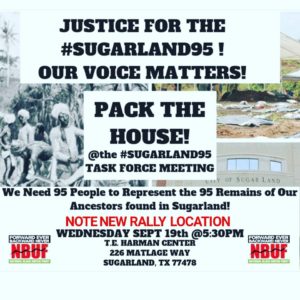
“Under convict leasing,” USA Today observes, “which flourished across Southern states after the Civil War and into the early part of the 20th century, state governments leased out convicts as forced labor, exploiting a clause in the 13th Amendment that outlawed slavery except as punishment for a crime.
Sisters and brothers, there is a backstory here that the journalist for USA Today did not choose to tell – perhaps the writer, Monica Rhor, did not dig deep enough? You see, until recently, this land where our ancestors’ remains were discovered was owned by the Texas Department of Criminal Justice (sic!). In fact, it was the location of a prison facility known as the Central Unit or Ellis Camp 1.
A few years ago, the prison agency sold the land. However, one of TDCJ’s very own employees, a courageous activist named Reginald Moore, who was featured in the USA Today article, told TDCJ prison officials and many others that there were bodies of “prison slaves” buried on that land. Reginald Moore had been telling this TRUTH for nearly 20 years – actually pleading with the state of Texas to honor and preserve this sacred burial ground in Sugar Land, Texas.
But as we all have learned, BLACK LIVES REALLY DO NOT MATTER TO TEXAS STATE PRISON OFFICIALS. Before this land was ever sold and chosen as a location for a technical educational center, high ranking prison officials and public officials knew the souls of Black folk were present on this hallowed ground. You do realize it is time for a national outcry for justice – don’t you?
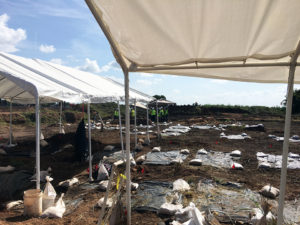
As I said in the past in my essay, “End Prison Slavery in Texas Now,” the state of Texas was founded on the precept of white supremacy. Whether we analyze the actions of Gregg Abbott, the current governor of Texas, his lieutenant, Dan Patrick, or Bryan Collier, the executive director of TDCJ, they all subscribe to a eugenics philosophy.
That same philosophy was embraced by their confederate ancestors and set forth in this quote from the vice president of the Confederate states, Alexander Stephens, in a speech he gave in 1861: “The Confederacy cornerstone rests upon the great truth that the Negro is not equal to the white man; that slavery subordination to the superior race is his natural and moral condition.”
So the framers of the U.S. Constitution purposely created this slavery exception clause in the 13th Amendment so they could allow their Southern partners to continue, after emancipation, to subjugate BLACK PEOPLE to the institutions of slavery and involuntary servitude in Amerika!
And this, sisters and brothers, is what we are up against in Texas and many other states, whether in the South, North, East or West. Prison slavery and mass incarceration is a pervasive and systemic epidemic which cannot be cured with one reform bill. ABOLITION IS THE ONLY ANSWER.
It’s time for some action
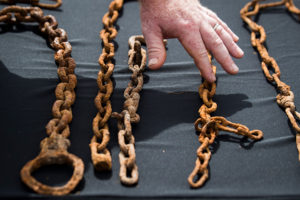
In the year of 2019, the struggle to completely abolish slavery in Amerika rages on. The movement ebbs and flows like a river. At times the waters are still, and then there are times like now when the current flows like raging rapids. Truthfully all we really have to do is to tap into the power of the people and ride the wave to a resounding victory! THE TIME TO PUSH IS NOW!
Sisters and brothers, I am teaming up with my comrades in struggle with the FREE ALABAMA MOVEMENT and we are sending out a call to freedom fighters and prison abolitionists of every race, creed and national origin. We are requesting that all of you contact Texas Gov. Greg Abbott as well as NEW incoming Attorney General Justin Nelson and DEMAND that the state of Texas declare this burial ground in Sugar Land, Texas, a historical site.
We want to ensure that our African ancestors are given proper burial rites. We are requesting that all of you stand with activist Reginald Moore so that the legacy of the Sugar Land 95 is honored, protected and preserved.
As USA Today reports, “Until the Sugar Land 95 are given a proper memorial and burial, Moore said, ‘Those people are still in bondage.’”
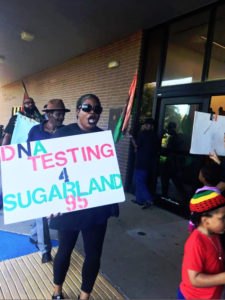
We want people to remember what these former Confederate officers who created this prison camp meant to do to our people. And we want to remind all of you that the work is far from being over and done. The struggle to end slavery in Amerika continues!
In the USA Today article, Brother Reginald Moore claimed that he was “the lone voice in the wilderness,” but I say this: Mr. Moore, you were never alone in regard to crying out for justice. Perhaps your years of working as a prison guard for the state of Texas obstructed your hearing or made you blind to a MOVEMENT which has been gaining incredible momentum as of late.
WE THE FIGHTERS AGAINST THIS SLAVE PLANTATION SYSTEM IN AMERIKA ARE MANY! In Texas we continue to struggle and honor the legacy and work of David Ruiz, Bobby Brown aka Muhammad, and Derrick Frazier, better known as HASAN SHAKUR! Kenneth Foster continues to fight, as do Thomas Miller-El, Nanon Williams, Reginald Gordon aka “OG-l,” Black Jesus, Man-Dee, Soul-Man, Jason Renard Walker, Norris “Fajr” Hicks, Kevin “Rashid” Johnson and I, Keith “Malik” Washington.
We have fought passionately for decades to end prison slavery in Texas. Now is our time to fight for the honor of our ancestors and to push forward our struggle for freedom, justice and equality for all human beings subjected to this modern form of slavery. Won’t you please help us? The only thing we have to lose is our chains!
Dare to struggle, dare to win, all power to the people!
How you can help
We want to demand that the burial ground in Sugar Land is protected and preserved as a historical landmark. Contact:
- Texas Attorney General Ted Paxton, who was narrowly re-elected even though he’s under indictment. He’s also a Tea Party Republican. But no one is immune to the power of the people; call 512-463-2080 or fax 512-936-2109.
- Texas legislators who represent the districts that include Sugar Land:
- Borris L. Miles, 512-463-0113 or 713-665-8322 (lives in Houston)
- Joan Huffman, 512-463-0117 or 281-980-3500 (lives in Houston)
- Lois W. Kolkhorst, 512-463-0118 or 979-251-7888 (lives in Brenham)
- Rick Miller, 512-463-0710 or 281-980-0117 (lives in Sugar Land)
- Ron Reynolds, 512-463-0494 (lives in Missouri City)
- Phil Stephenson, 512-463-0604 or 281-232-7900 (lives in Rosenberg)
Sign the petition to “Stop the Desecration of the Remains of the #Sugarland95 and their Gravesite.”
Keith “Malik” Washington is a cofounder and chief spokesperson for the End Prison Slavery in Texas Movement; he is a proud member of the Incarcerated Workers Organizing Committee and the deputy chairman of the New Afrikan Black Panther Party Prison Chapter. Malik has been instrumental in calling for the abolition of legalized slavery in Amerika and is very active in the Fight Toxic Prisons campaign. You can view his work at comrademalik.com or you can also read articles and essays that he regularly writes for the San Francisco Bay View National Black Newspaper. You can read his articles at https://sfbayview.com/?s=keith+malik+washington or you can write Malik directly at Keith ‘Malik’ Washington, 1487958, McConnell Unit, 3001 S. Emily Dr., Beeville, TX 78102.
NBUF rises in court to halt Sugar Land 95 removal from gravesite
by Kofi Taharka, national chairman of the National Black United Front (NBUF)
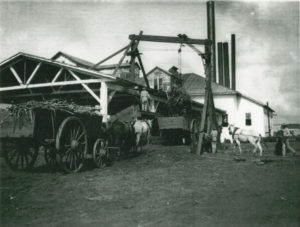
On Nov. 19, 2018, a dramatic scene played out in the 434th Fort Bend County Court in Richmond, Texas. At issue was the motion to remove the remains of the Sugar Land 95 from the site at which they were unearthed. National Black United Front (NBUF) representatives Swatara Olushola and Kofi Taharka along with other community representatives stepped to the bench at the invitation of Judge Shoemake.
Articulate and forceful, the group argued against the removal of the remains due to the lack of robust descendant community engagement including DNA testing by the Fort Bend Independent School District (FBISD). Lawyers for FBISD were flanked on all sides by African/Black community representatives shooting down their ill-conceived pleas to the judge.
Ultimately, the judge temporarily halted the petition to remove the remains until further effort was put in to engage all interested parties. He appointed a “special master” for the court to work with parties present. Judge Shoemake stated further decisions on the motion may be delayed until March of 2019.
In April of 2018, information began to be made public that an African Burial Ground dating from the late 1800s to the early 1900s was “discovered” on a school construction site of FBISD. By mid-July FBISD announced that 95 intact graves of Africans in America had been unearthed, victims of crimes against humanity in what was known as the convict lease system or slavery by another name.
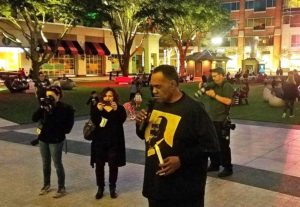
The unholy alliance between the state of Texas and Imperial Sugar Co., along with the free labor of enslaved Africans, literally laid the foundation for the upscale suburb of Houston called Sugar Land. For the National Black United Front, other formations and anyone with a basic understanding of American history the “discovery” comes as no surprise.
Mr. Reginald Moore, a lay historian known throughout activist circles in the area, has been telling anyone who would listen for decades that these forgotten and tortured souls existed. “Sugarland got a dirty little secret and it ain’t so sweet” is one of his common refrains. Further, in 2001 NBUF researcher Omowale Haggerty, an East Texas native, revealed through his work the bloody history of Imperial Sugar Co. as a part of the international movement for reparations.
The racial violence and mass incarceration committed against African people today finds its antecedents in the history being revealed by the unearthing of the Holy Egungun (Ancestors) at the African Burial Ground in Sugar Land, Texas. Police terrorism and other acts of aggression by the global white supremacy apparatus taking place in 2018 is on common ground with the tactics utilized to re-enslave Africans after the first Juneteenth announcement in 1865.
Dr. Obidike Kamau states, “History is a stream, not a series of disconnected puddles.” FBISD is currently under fire for a recent report that shows African-American children in its district are six times more likely than other students to receive disciplinary measures. At the same time the school district, city of Sugar Land, Imperial Sugar Co. and the state of Texas are attempting damage control to limit public knowledge of and reaction to the historic find that reveals its terroristic past.
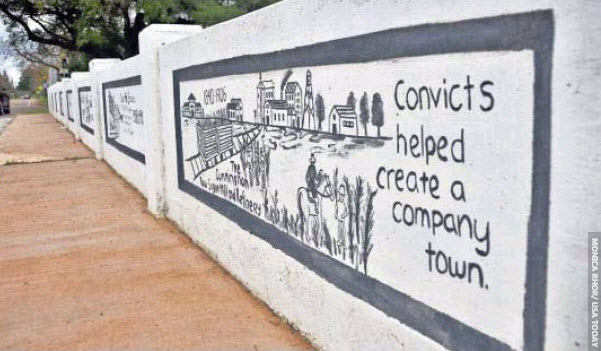
“The find in Sugar Land is not really rare, when you think about how this country was built off our free labor during enslavement and, later, our convict, concentration camp labor. Our ancestral remains are throughout this country.
“What is rare about Sugar Land is that it is preserved and being widely publicized. How many cemeteries do you think are just being bulldozed over in the name of development?” These were the comments of Ray Winbush, PhD, of Morgan State University, Baltimore, Maryland.
NBUF, along with activists, African spiritualists and expert allies over several months, has engaged in a series of activities including ancestral veneration rituals, meetings with officials, site tour, protest, research and community forums. This work has produced the following list of concerns and demands in respect to the African Burial Ground in Sugar Land.
- Intellectual control should be transferred to properly credentialed and experienced scholars of African ancestry;
- The existing African-American historic context document should be used for this project;
- Descendant community engagement must be robust and include proper DNA testing, consultation with interested parties and a comprehensive burial plan;
- The Convict Lease Museum must be established; it should be paid for in part by the state of Texas and the Imperial Sugar Co.;
- The descendant community must receive full and complete reparations.
It would be a grave mistake not to understand that the African Burial Ground in Sugar Land, Texas, is not just a story about the past but about the present also.
Joint Task Force for the Preservation of the African Burial Ground in Sugar Land, Texas
Task Force members include NBUF’s Swatara Olushola, Chief Omilana Fagbenro Amusan, Deric Muhammad, SHAPE Community Center’s Deloyd T. Parker, Black Panther Party Alumni Association’s John Bunchy Crear, Nation of Islam Muhammad Mosque #45’s Abdul Haleem Muhammad, PhD, Obidike Kamau, PhD, Fred McGhee, PhD, Mtangileze Sanyika, PhD, Amandla Productions’ Akua Holt, Shrine of the Black Madonna Church, Freedmen’s Town Association, Coalition to Abolish the Death Penalty and Akoramante Society.
Kofi Taharka has the privilege, honor and responsibility of being the national chairman of the National Black United Front (NBUF), 2428 Southmore Blvd., Houston, TX 77004, Facebook: https://www.facebook.com/pg/blackunitedfront/photos/?ref=page_internal. Email him at nbufhouston@gmail.com or call 832-422-7806. Follow him on Facebook, Twitter and Instagram.
Recommended reading
“A Fate Worse Than Slavery, Unearthed in Sugar Land” by Brent Staples, New York Times, Oct. 27, 2018
“Activist’s archives on Sugar Land convict-leasing system reside at Rice” by Katharine Shilcutt, Rice University, July 23, 2018
“Bodies believed to be those of 95 black forced-labor prisoners from Jim Crow era unearthed in Sugar Land after one man’s quest” by Meagan Flynn, Washington Post, July 18, 2018
“Internment of Sugar Land 95 lingers in court – School district, advocates at odds over reburial of remains from cemetery“ by Theresa D. McClellan, Fort Bend Star, Dec. 21, 2018
“A mass grave — and chilling secrets from the Jim Crow era — may halt construction of a school in Texas” by Meagan Flynn and Lindsey Bever, Washington Post, Nov. 19, 2018
“Documenting ‘Slavery by Another Name’ in Texas” by The Editorial Board, New York Times, Aug. 13, 2018
Google “Sugar Land 95” for many more news, analysis and opinion stories.





